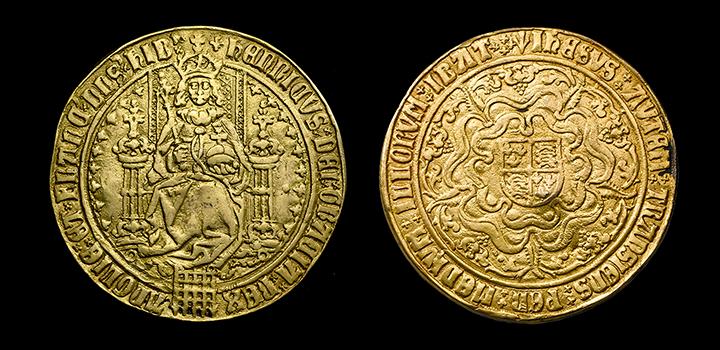








Designed by Nigel G Wilcox






The Paragon Of Metal Detecting
Powered By Sispro1
British Sterling Currency - Numismatics,
Sovereign
For Reference ONLY
Everything For The Detectorist
Henry VIII 1509-1547 AD
Royal Monarchy
Copyright All Rights Reserved by Nigel G Wilcox E-Mail: ngwilcox100@gmail.com
INFORMATION - DATA
Pages
Sovereigns were then struck for Henry VIII from 1509, and a half sovereign was also introduced during his reign. In 1526 the official value of English gold coins was raised by 10%, making a sovereign worth 22 shillings (22/- or 22s.), and then shortly after they were again revalued to 22s6d.
With its enormous size and magnificent designs, the new sovereign constituted a remarkable addition to the English coinage. For the first time the pound sterling, in use for centuries as a denomination of account, was given material expression in the shape of a single coin.
For all that the sovereign may have performed some economic function as a large and impressive store of wealth, it is unlikely there was a genuine monetary need for a piece of such high value. The main stimulus for the new coin was probably political, the purpose being to add lustre both at home and abroad to the image of the new Tudor dynasty. Indeed the sovereign may well have appeared in 1489 precisely because it was in that year the Tudors gained effective international recognition in the Treaty of Medina del Campo - by which Henry VII s son and heir, Arthur, was to marry a Spanish princess.
The sovereign was probably intended, to some extent at least, to serve as a presentation and ceremonial piece. Certainly there are two cases recorded of sovereigns being used as diplomatic gifts: the first from May 1502 when 16 pieces were given to ambassadors from Hungary; the second from February 1506 when 40 pieces were presented to members of the household of the king of Castile.
With its enormous size and magnificent designs, the new sovereign constituted a remarkable addition to the English coinage. For the first time the pound sterling, in use for centuries as a denomination of account, was given material expression in the shape of a single coin.
For all that the sovereign may have performed some economic function as a large and impressive store of wealth, it is unlikely there was a genuine monetary need for a piece of such high value. The main stimulus for the new coin was probably political, the purpose being to add lustre both at home and abroad to the image of the new Tudor dynasty. Indeed the sovereign may well have appeared in 1489 precisely because it was in that year the Tudors gained effective international recognition in the Treaty of Medina del Campo - by which Henry VII s son and heir, Arthur, was to marry a Spanish princess.
The sovereign was probably intended, to some extent at least, to serve as a presentation and ceremonial piece. Certainly there are two cases recorded of sovereigns being used as diplomatic gifts: the first from May 1502 when 16 pieces were given to ambassadors from Hungary; the second from February 1506 when 40 pieces were presented to members of the household of the king of Castile.

Sovereign

A unique sovereign of Henry VIII with a mintmark showing the sun breaking through clouds survives in the British Museum. Numismatists have long suspected that this highly distinctive mintmark, located at the start of the inscription on both sides of the coin, may be in some way connected with the birth of Henry’s long-awaited son on 12 October 1537.

Debasement Type I - For the debasement sovereigns, the traditional shield-on-rose reverse design was abandoned in favour of a shield of the royal arms with lion and dragon supporters, with a monogram HR in a panel below.

Type II - A slight reduction in the diameter of the coins in 1544 required some modification of the design, most obviously the removal of the tressure surrounding the enthroned portrait.

Henry VIII
Main Coin Menu

VIEW ALL MENUS
Member NCMD
6. S. Menu
























